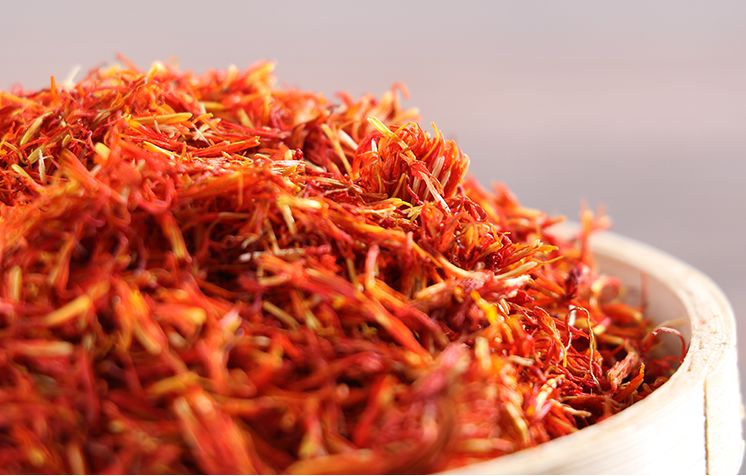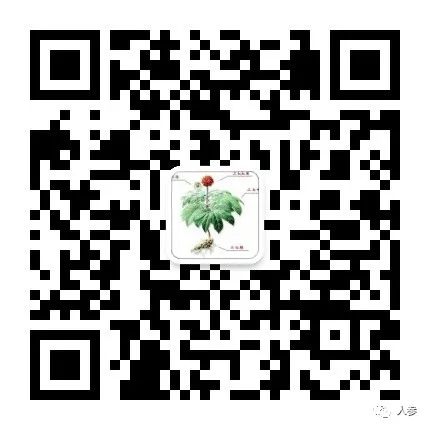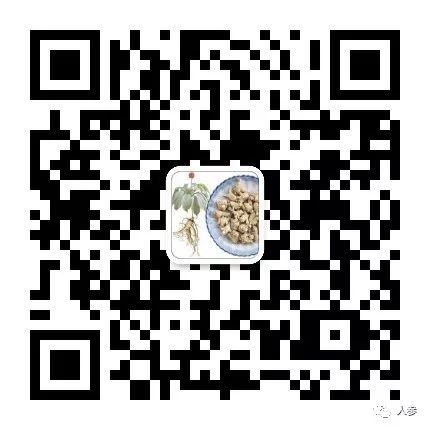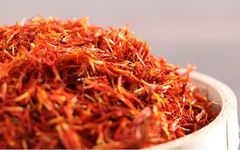 Honghua (Safflower) Encyclopedia
Honghua (Safflower) Encyclopedia
【Source】Honghua refers to the dried flowers of the plant from the Asteraceae family.
【Taste and Properties and Meridian Affinity】Spicy, warm. Enters the Heart and Liver meridians.
【Characteristics】This herb is spicy, dispersing, and warming, benefiting the Heart and Liver meridians. It can invigorate blood circulation and unblock meridians, dispel blood stasis, alleviate pain, and is particularly suitable for conditions involving blood stasis and cold.
【Functions】Invigorates blood circulation and unblocks meridians, dispels blood stasis, and alleviates pain.
【Indications and Symptoms】
1. Blood stasis leading to amenorrhea, dysmenorrhea, and postpartum retention of lochia.
2. Chest obstruction and heart pain, masses and accumulations, trauma and swelling.
3. Dark-colored rashes (when combined with heat-clearing and blood-cooling herbs).
【Dosage and Administration】3 to 10 grams.
【Precautions】Use with caution in pregnant women. This herb is spicy and warm, with strong blood-invigorating properties, thus contraindicated for pregnant women and those with excessive menstrual bleeding.
【Origin】Mainly produced in Henan, Hebei, Zhejiang, Sichuan, Xinjiang, and other provinces.
【Harvesting and Processing】Harvest the flower crowns from late May to July when they change from yellow to red, preferably on sunny mornings when the dew has dried, and dry in the shade or under sunlight.

【Identification of Authenticity】
Authentic Honghua: The flower crowns are bright red and vivid, without branches or thorns, soft and smooth to the touch.
Honghua consists of tubular flowers without ovaries, approximately 1 to 2 cm long. The surface is reddish-yellow or red. The flower crown tube is slender and five-lobed at the tip, with lobes that are narrow and 5 to 8 mm long; there are five stamens, and the anthers are fused into a tubular shape, yellowish-white; the stigma is long and cylindrical, slightly bifurcated at the tip, and soft. It has a faint fragrance and a slightly bitter taste.
Local Varieties: There are thornless varieties of Honghua with deep red flowers, cultivated in North China and Xinjiang.
Quality Identification: Some unscrupulous merchants dye other Asteraceae plants and sell them as Honghua to consumers. Here are some simple and quick identification methods:
1. Appearance: Authentic Honghua has clear and straight flower columns, flower crown lobes, and anthers. The red (yellow) color of the flower crown tube is easily distinguishable from the yellowish-white anthers. Dyed flowers appear fluffy, with curled flower columns and lobes, and may clump together, showing reddish-yellow colors, with the yellowish-white of the anthers being less distinct; the inner surface of clumps appears yellowish-white while the outer surface is red.
2. Smell: Authentic Honghua has a faint fragrance and a slightly bitter taste; dyed flowers have a pungent smell from the dye.
3. Water Test: Place Honghua in a cup and add an appropriate amount of warm water. The solution from authentic Honghua will be clear and golden-yellow, with the red color of the flower crown lobes and the yellow of the anthers remaining unchanged. The solution from dyed flowers will be cloudy and brownish-red, with the colors of the flower crown lobes and anthers fading.
【Modern Pharmacological Research】
Honghua contains safflower glycosides, safflower quinones, and new safflower glycosides. The components vary with the maturity of the flowers; pale yellow flowers mainly contain new safflower glycosides and trace safflower glycosides; yellow flowers contain safflower glycosides; and orange-red flowers contain safflower glycosides or safflower quinones. It also contains safflower yellow, palmitic acid, myristic acid, and lauric acid. Modern studies show that Honghua can stimulate the uterus, dilate blood vessels, improve microcirculation, and have anticoagulant, anti-thrombotic, and lipid-lowering effects.

【Clinical Applications】
1. For symptoms of masses, abscesses, trauma, rheumatic pain, menstrual irregularities, amenorrhea, and postpartum pain: Honghua is spicy, dispersing, and warming; it is primarily used to invigorate blood and dispel stasis, making it a key herb for treating blood stasis, especially for women with menstrual issues. Honghua is often used with Taoren (Peach Kernel) for blood invigorating effects, and combined with Danggui (Angelica Sinensis), Chuanxiong (Chuanxiong Rhizome), and Shaoyao (Peony) for blood invigorating; for dispelling stasis, it can be combined with Sanleng (Sparganium), E Zhu (Curcuma), Dahuang (Rhubarb), and Chanchu (Mantis Egg) etc.
2. For dark-colored rashes: Honghua can be used for measles that have receded or for heat stagnation and blood stasis with rashes that are not bright red, utilizing its blood-invigorating and stasis-dispelling properties, and can be combined with Danggui, Zicao (Lithospermum), and Daqingye (Isatis Leaf) for blood-invigorating, cooling blood, and detoxifying effects.
3. For coronary heart disease and thromboangiitis obliterans: For coronary heart disease and angina, it is often used with Danshen (Salvia) and Chuanxiong; for thromboangiitis obliterans, it can be combined with Danggui, Taoren, Chishaoyao (Red Peony), and Ruxiang (Frankincense).
 Honghua Dietary Therapy
Honghua Dietary Therapy
1. Honghua Glutinous Rice Porridge: 5g of Honghua, 10g of Danggui, 15g of Danshen, and an appropriate amount of glutinous rice. Boil Honghua, Danggui, and Danshen in water, filter to retain the liquid, wash the glutinous rice, and cook it with the liquid and an appropriate amount of water until porridge is ready. Season to taste. This can nourish blood, invigorate blood circulation, and regulate menstruation, suitable for those with menstrual irregularities.
2. Honghua Black Bean Sweet Soup: 4g of Honghua, 30g of black beans, and an appropriate amount of brown sugar. Soak Honghua for 10 minutes, wash the black beans, and place both in a clay pot with an appropriate amount of water. Boil on high heat for 5 minutes, then simmer until the black beans are soft. Remove the black beans and Honghua, add sugar to taste. This can invigorate blood circulation and dispel stasis, alleviating pain, suitable for severe dysmenorrhea.
Recommended Public Account
Shen Sanqi
Long press to identify the QR code to follow

Western Ginseng Encyclopedia
Long press to identify the QR code to follow

Selected Content
《How to Clean Fresh Ginseng? Why Are There Black Spots After Washing?》
《Is Ginseng Poisonous?”》
《Ginseng + Old Hen is a Perfect Match》
《Identifying the Age of Ginseng》
《Can Hypertensive Patients Consume Ginseng?》
《The Ginseng Industry is Nearing Collapse Due to Price Manipulation!》
《Documenting the Entire Process of Ginseng Harvesting, It’s a Life Experience!》
《Ginseng Auction: A 300-Year-Old Ginseng is Worth Over Ten Million!》
《Wild Mountain Ginseng Appreciation》
《CCTV: The Price of Wild Mountain Ginseng is Rising Against the Trend》
《How Much Wild Ginseng Can China Produce in a Year?》
《Ginseng is Not the Last Straw for Cancer Treatment》
Spreading Ginseng Culture, Inheriting TCM Philosophy


